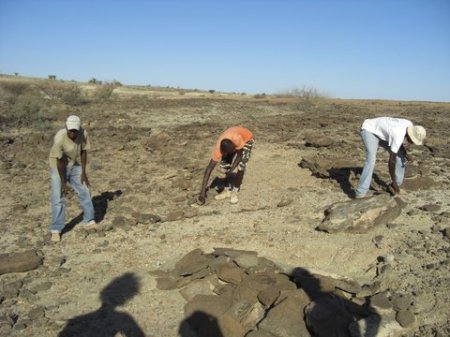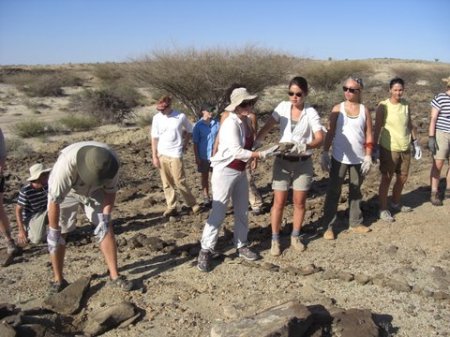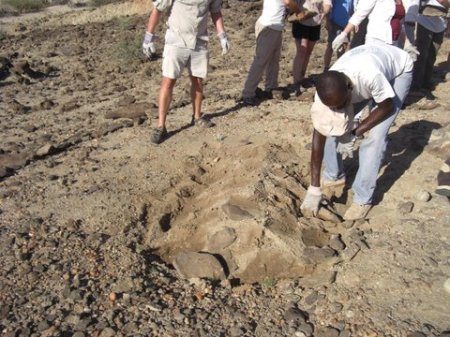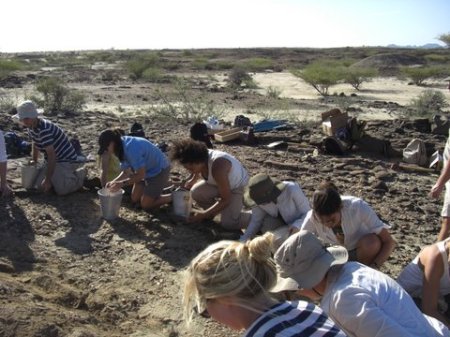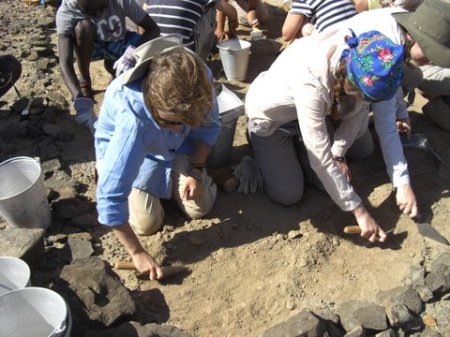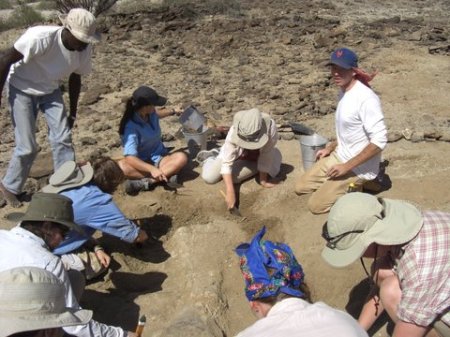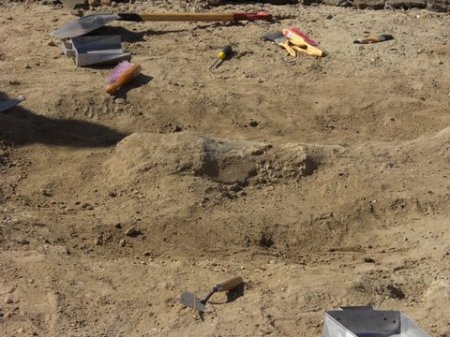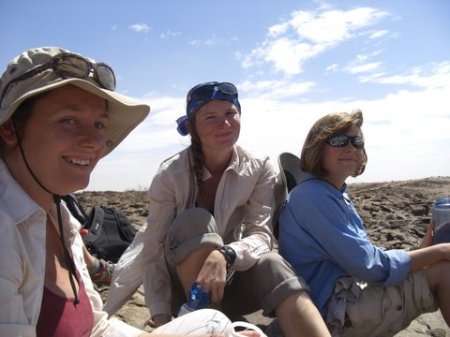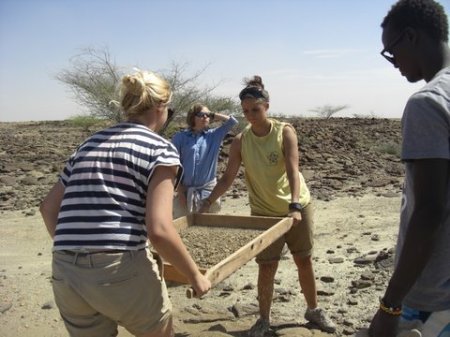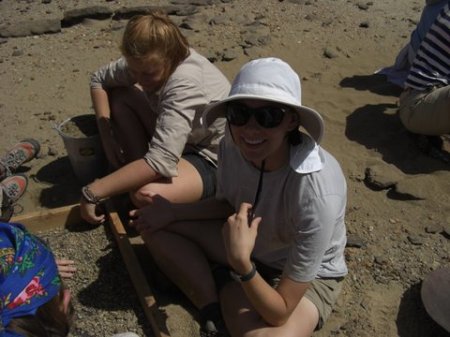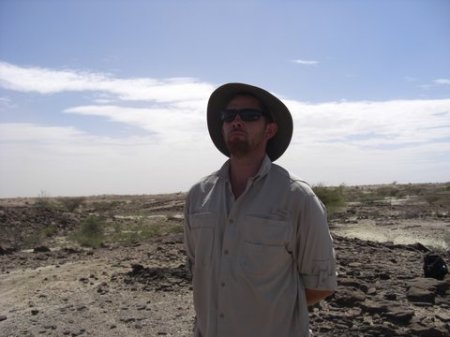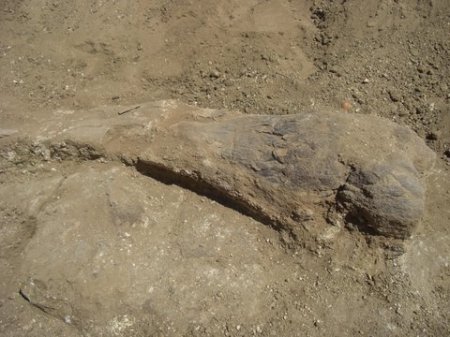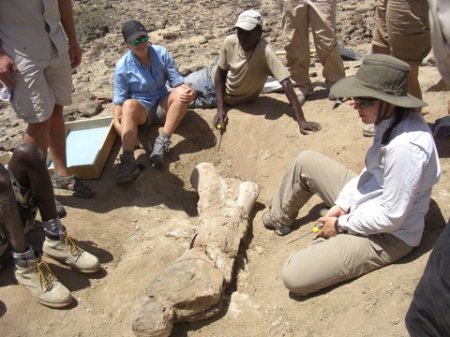Yesterday, the Field School students got to take part in an excavation, giving them the opportunity to hone recently acquired skills and learn new ones. A fossil elephant skeleton had been eroding out of deposits near South Turkwel, only 30 minutes from the TBI compound. Previous Field Schools have worked at extracting the bones, but there was still material on the ground, so we headed out bright and early and got to work!
The site where the skeleton was eroding out was protected by previous excavators by a layer of sand and large rocks. The first step was to remove the rocks, a true team effort.
Dr. Lewis, Francis, John, and Charles carefully loaded the very heavy femur into cushioned trays so we could transport them back to TBI-Turkwel for cleaning and processing. We headed back to campus for lunch feeling very satisfied after a morning of hard work!

